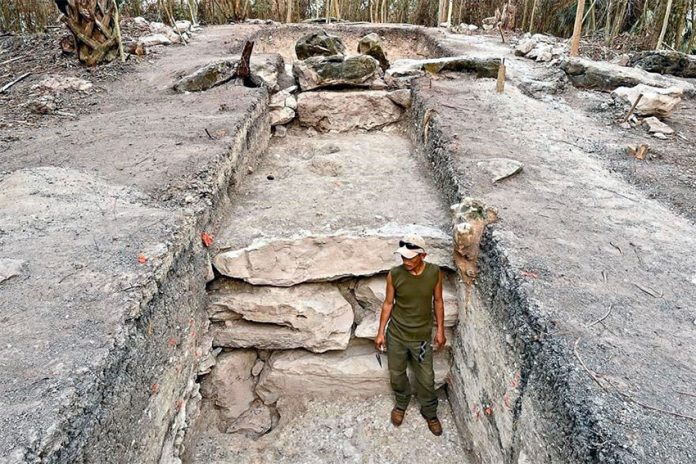Archaeologists have discovered a massive clay and earth platform near the Guatemala border in Tabasco that is the largest and oldest known structure built by the ancient Mayan people.
An international team found the structure at the Aguada Fénix site using an aerial remote-sensing method known as lidar, or light detection and ranging.
The platform is 400 meters wide, 1,400 meters long and 10 to 15 meters high. Its total volume is greater than that of the Great Pyramid of Giza in Egypt.
The structure was built about 3,000 years ago and was probably used for rituals attended by large numbers of people, researchers said on Wednesday. The earthen platform predates the stone pyramids at Chiapas’ Palenque site and Tikal in northern Guatemala by about 1,500 years.
Nine causeways and a series of reservoirs were once connected to the structure, located at a partially-wooded site where cattle are now raised.

“It’s not a pyramid but a great rectangular platform that we believe is related to rituals and ceremonies,” said Verónica Vázquez, a Mayan archaeology expert and a member of the team that explored the site.
“The size and shape of the structure would have allowed the gathering of a lot of people,” she said.
Ceramic offerings as well as shells, animal bones and jade axes have been found but no sculptures depicting high-status individuals have been discovered.
That suggests that Mayan society was communal at the time the rectangular platform was in use and only later became hierarchical, the researchers said.
“We don’t have evidence here of the marked hierarchical structure that appears at other sites, with the Olmecs, for example. It is believed that the the colossal head sculptures represent rulers but we don’t have this at Aguada Fénix,” Vázquez said.
Takeshi Inomata, an archaeologist at the University of Arizona and the lead author of an article on the monumental architecture that was published Wednesday in the journal Nature, said the structure “is so large horizontally” that “if you walk on it, it just looks like natural landscape.”
However, “its form comes out nicely in lidar,” he added.
Inomata said that the rituals and ceremonies held at the structure probably attracted many people from surrounding areas and were possibly tied to calendar cycles.
“The rituals probably involved processions along the causeways and within the rectangular plaza. The people also deposited symbolic objects such as jade axes in the center of the plateau,” he said.
Inomata has calculated that construction of the massive rectangular platform would have taken about 5,000 people more than six years.
It is believed to have been abandoned around the year 750 B.C., some 50 to 250 years after it was built.
